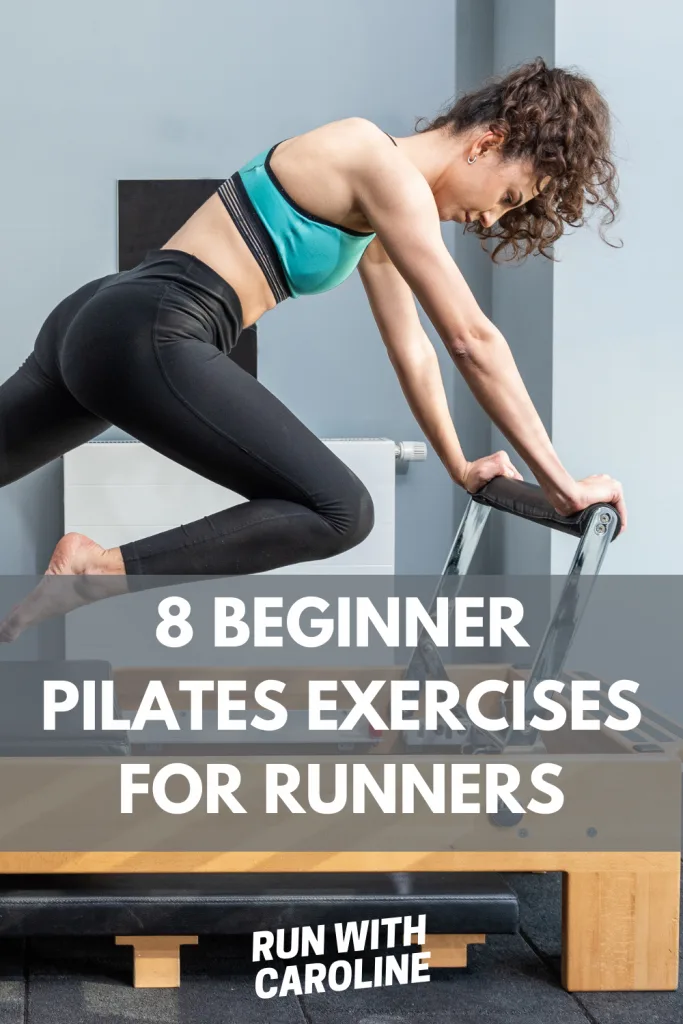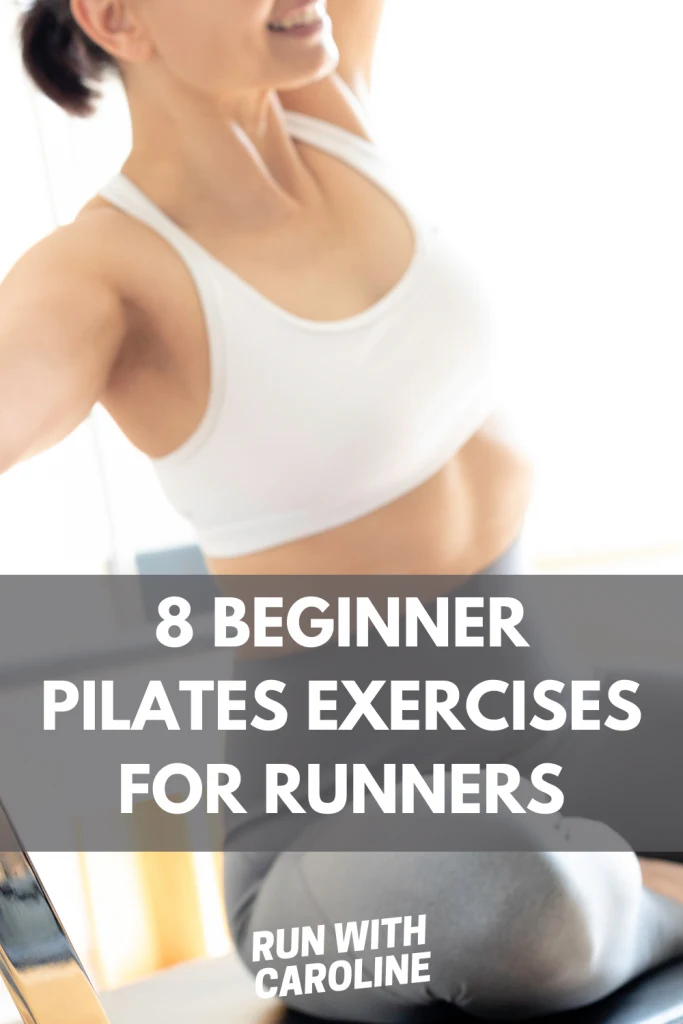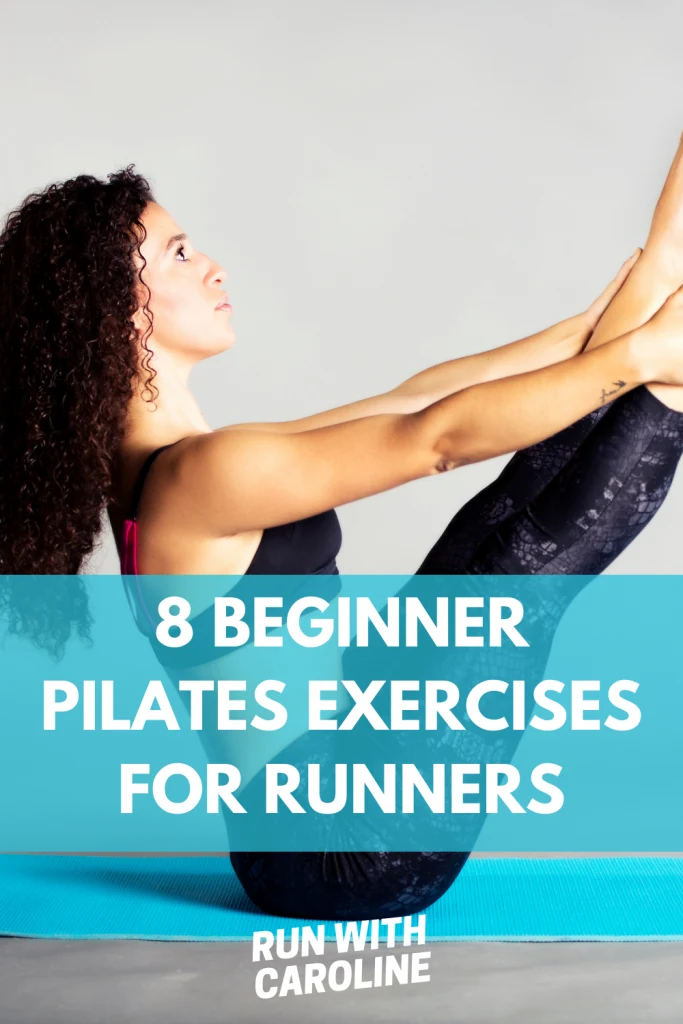Pilates has become increasingly popular over the last few years as people look for more ways to get active.
As a form of low impact exercise, Pilates is a great addition to any training plan to complement your running.
In addition, there are many Pilates exercises for runners that offer a full body workout, allowing you to focus on improving your strength and flexibility.
In this guide, we’ll look at:
- What is Pilates?
- What is Pilates good for?
- What is the difference between Pilates and yoga?
- Is Pilates good for runners?
- What are the best beginner Pilates exercises?
Are you ready?
Let’s get started!

What is Pilates?
Pilates is a form of low impact exercise that aims to strengthen muscles whilst improving flexibility, mobility and postural alignment.
It takes its name from Joseph Pilates who founded the exercise in the 1920s following his time in America following World War I.
He took inspiration from many types of exercise, including gymnastics and bodybuilding, as well as Eastern disciplines of yoga, tai chi and meditation, to create Pilates.
Related: Morning stretches for runners
What is Pilates good for?
Pilates has many physical and mental benefits. It is a full body exercise so targets all the major muscle groups in the body.
In fact, according to a 2010 study, two 60-minute sessions of Pilates per week over 12 weeks was enough to increase abdominal endurance, hamstring flexibility and upper body muscular endurance.
When practised regularly, Pilates helps to:
- Strengthen muscles
- Improve form and posture
- Improve flexibility
- Improve balance and stability
- Help with recovery
- Strengthen your core
- Boost your mental wellbeing
Related: Does running burn belly fat? 10 effective tips to lose belly fat

What is the difference between Pilates and yoga?
Whilst Pilates and yoga are similar in many ways, they have very different backgrounds.
Yoga is centuries old, whereas Pilates was developed in the early twentieth century.
Here is the key difference between yoga and Pilates:
- When practising Pilates, you adopt a position and then challenge your core by moving your arms and legs.
- When practising yoga, you typically adopt a position and hold it, or flow into a different position.
Of course, whether you do Pilates or yoga as part of your training plan will depend on your personal preferences and fitness goals.
Pilates may be better for recovering after injury, improving posture and improving core stability.
Yoga, on the other hand, can help to deepen your meditation practice, improve your flexibility and improve your balance.
Related: Yoga benefits for runners
Is Pilates good for runners?
Yes! Doing Pilates is a great way to complement your running and add variation into your training plan.
Running is considered a high impact exercise, so doing Pilates introduces some much needed low impact exercise into your training plan (e.g. it won’t put your body under further stress).
Pilates helps to stabilise your core muscles.
Your core stability when running is important because it helps you to hold a strong and stable position for longer (e.g. prevents slouching).
Pilates also promotes good biomechanics.
Simply put this is the structure, function and motion of your body’s mechanics when performing any type of movement or exercise.

What are the best beginner Pilates exercises for runners?
Here are the 8 beginner Pilates exercises for runners:
#1 Pelvic curl
The pelvic curl is a great exercise to target the spine, abs and hamstrings.
Your abs should be doing all the work in this exercise, not your glutes and hamstrings as seen with a traditional glute bridge.
It’s a good exercise to help alleviate back pain.
Here’s how to do it:
- Lie on your back. Make sure your feet, ankles and knees are hip-distance apart.
- Engage your abs for a pelvic tilt. You can do this by pulling your belly button towards your spine.
- Inhale and curl your tailbone upward towards the ceiling until your body is in a straight line between knees and shoulder blades.
- Exhale and use your abs to roll back down to the mat.
- Repeat 10-12 times.
#2 Chest lift
This exercise targets your abs, torso and upper back.
At first glance, the chest lift looks like an abdominal crunch, but there are some key differences between the two.
The key for both exercises however is to keep your neck and shoulders relaxed.
Here’s how to do it:
- Lie on your back with your knees bent and feet flat on the floor.
- Make sure your legs are parallel so that your ankles, knees and hips are aligned.
- Keep your shoulders down and bring your hands behind your head. Keep your elbows open.
- Slowly lift your upper spine off the mat, leading with the front of your chest. Keep your neck and shoulders relaxed.
- Release and return back to the mat.
- Repeat 10-12 times.
#3 Supine spine twist
This exercise can act as a stretch as well as a movement to help stabilise and strengthen your core muscles, especially your obliques.
As such, your knees should be kept together and levelled throughout the movement in order to maintain proper alignment.
If you don’t keep your knees aligned when you go into the twist, this can affect your lower back.
Here’s how to do it:
- Lie on your back with your knees bent and feet flat on the mat.
- Press your feet into the mat to lift your hips slightly off the mat and shift them about an inch to your right.
- Exhale and draw your right knee into your chest and extend your left leg flat on the mat. Keep your left foot flexed.
- Cross your right knee over your midline to the mat on the left side of your body.
- Open your arm to the right, keeping in line with your shoulders.
- Rest your left hand on your right knee or extend it to make a T shape with your arms.
- Turn your head to the right, bringing your gaze over your shoulder to your right fingers.
- Release your left knee and right shoulder towards the floor.
- Hold the pose for 5-10 seconds.
- Roll onto your back and release both legs to the floor to come out of the pose.
#4 Clam
The clam is one of the best Pilates exercises for runners for targeting the glutes, thighs and hips.
This exercise is often prescribed to runners suffering from knee pain as it activates the muscles needed for good knee function.
Here’s how to do it:
- Lie on your side with your hips and shoulders in a straight line.
- Bend your knees so your thighs are at a 90 degree angle and rest your head on top of your arm whilst it is stretched out.
- Your knees will be stacked on top of one another.
- Keep your toes together and slowly rotate your leg in the hip socket so that your top knee opens.
- Exhale and slowly bring your knees together again.
- Repeat 5 times then swap sides.
#5 Hip flexor stretch
The hip flexor stretch helps to improve mobility in the hips. It’s also a great exercise to improve posture and ease lower back pain.
Here’s how to do it:
- Kneel with one knee in front of the other in a forward lunge position.
- Engage your core and keep your chest upright.
- Slowly push your hips forward until you feel a stretch in the front of your back thigh.
- Gently tuck your tailbone underneath you to increase the stretch if needed.
- Repeat on the other leg.
- Hold for 30 seconds on each leg.
#6 Roll up
The roll up is quite a challenging exercise if you have never done one before.
It’s one of the best Pilates exercises for runners to do though to improve your core strength and stability. It has been said that one roll up is equivalent to six abdominal crunches.
Here’s how to do it:
- Lie on your back with your legs straight, let your belly drop down to the floor, and make sure your shoulders are relaxed.
- Bring your arms straight over your head and back so that your fingertips are pointing at the wall behind you.
- As your arms pass your ears, let your chin drop and in one smooth motion, curl your body in an ‘up and over’ motion towards your toes.
- Make sure you keep your legs on the floor and don’t let them fly up as you roll down. Check that your shoulders are relaxed and not bunched up.
- Keep your upper body curve as you roll back down slowly with control. Your arms should be stretched still when you come back down.
#7 Leg circles
Leg circles improve your core strength and pelvic stability.
Your abs will work hard during this exercise to keep your torso controlled whilst your legs move.
This exercise also promotes balance and improved overall function of your hips which are both important for runners.
Here’s how to do it:
- Lie on your back with your legs extended on the floor, arms by your sides.
- Engage your core by pulling your belly button towards your spine.
- Draw one knee towards your chest and then extend it straight towards the ceiling.
- Cross the extended leg up and over the body so it angles up towards the opposite shoulder.
- Lower the extended leg towards your centre line in a circular motion. Use control as you do this, and then sweep it around back to the centre line at your starting position.
- Do 5-8 circles in one direction, then reverse.
#8 Back extension
The back extension is a back strengthening exercise. It is recommended for people with back pain because it strengthens all of the back extension muscles in the upper and lower back.
Here’s how to do it:
- Lie on your stomach with your legs together, arms by your sides.
- Lift your abdominal muscles away from the mat.
- Keep your core engaged – pull your abs in.
- Extend energy through your spine and out the top of your head to lift your upper body slightly off the mat. Your legs and glutes should be engaged but don’t over-squeeze them.
- Your gaze will be down. Slide your shoulder blades down your back as your arms reach behind you like they are being blown back. Hold for an inhale.
- Exhale to lengthen and lower your body to the floor.
- Repeat 3-4 times.
- 5 things I wish I’d known before returning to running - March 3, 2024
- Running 20 minutes a day: Benefits + how to start - January 27, 2024
- How to run your first 2 hour half marathon - January 16, 2024
